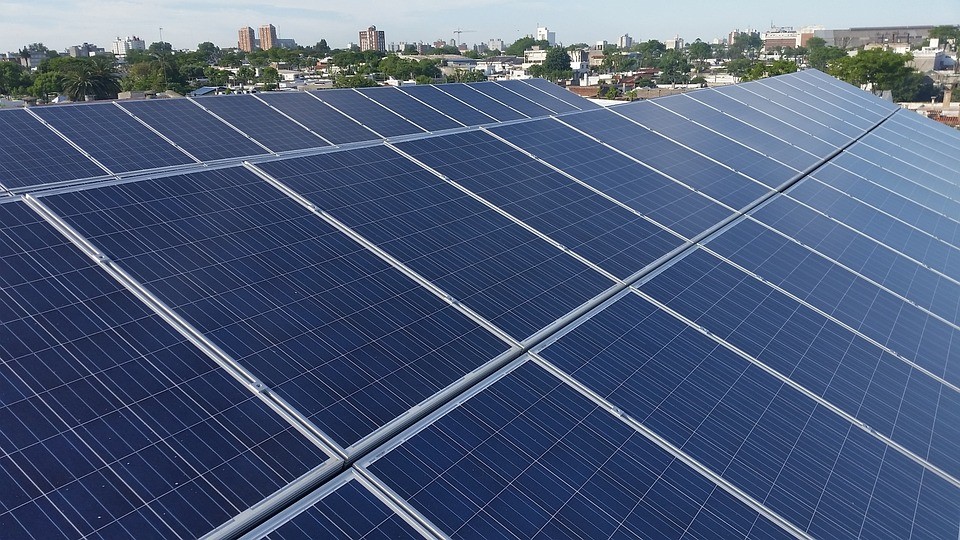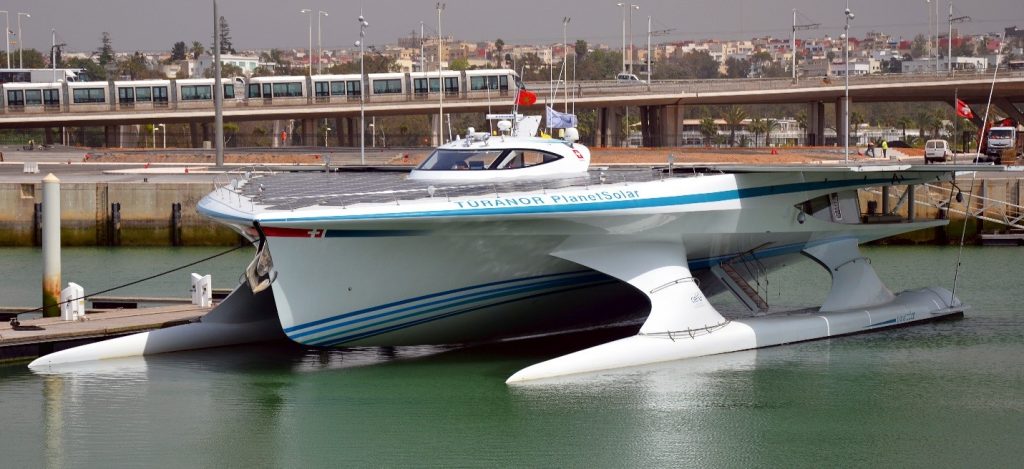InTrans / May 25, 2016
Whatever floats your boat: Solar energy
Go! Magazine
 posted on May 25, 2016
posted on May 25, 2016
Can you believe, in the United States, only 10 percent of the energy we consume comes from renewable sources? So, what’s a renewable energy source? You’ve probably heard of them before: wind energy, solar energy, hydroelectric energy, geothermal energy, and biomass. In the next few articles, we’ll be talking about how renewable energy sources are being put to use in the world of transportation; from solar power to wind energy, some engineers, inventors, and entrepreneurs are taking advantage of these eco-friendly energy alternatives.
Our entire planet could be powered using solar energy alone.
Did you know that every hour the sun illuminates the Earth with more than enough energy to sustain global energy demands for a whole year?
In the past 15 years, the use of solar energy has grown about 20 percent year each. Yet solar power produces less than 0.1 percent of the energy to meet the global energy demand.1 Even in the United States—a major market for solar energy—solar power makes up a mere 0.6 percent of energy sources.2
What is solar power?
Solar energy comes from converting sunlight into electricity.
Solar energy uses two different technologies. The first is photovoltaic and the second is thermal (which is more concentrated). Photovoltaic technology is used on things like spacecrafts, rooftops, and even things in and around the classroom—like handheld calculators! It’s also used to power energy-efficient modes of transportation.

Sailing on solar power
Renewable energy is nothing new to the sailing world.
Solar panels can be built onto a boat in areas like the deck, cabin roof, and awnings. Some solar panels—like the photovoltaic technology we talked about—can be flexible enough to fit into curved surfaces, making for more unusual architecture.
The most impressive solar-powered vessel charting the sea today, and the largest solar-powered boat in the world, is MS Tûranor PlanetSolar (know under the project name “PlanetSolar”).

Although it was first unveiled in 2010, the vessel’s most impressive feat would come in May 2012, when the ship completed an around-the-world trip—after visiting 28 different countries in 585 days—without using any fossil fuels.
PlanetSolar was the first solar-powered vehicle to circumnavigate the globe, and so far, is the largest solar-powered boat ever built, measuring 102 feet in length.
Why solar power?
Solar power has many unique and attractive qualities when it comes to energy production.
For example, solar energy produces electricity without the negative drawbacks of air pollution, greenhouse gases, or solid waste. It also has no fuel costs. Also, photovoltaic technologies are getting more efficient and affordable!
Why not solar power?
Solar power and other renewable sources alike come with a list of drawbacks, too.
Solar power requires a rather large amount of surface area to get the job done. Additionally, solar power may be spotty, because the sun isn’t always shining. Solar power can also have a negative impact on wildlife and ecosystems.
Though it comes with a few drawbacks, solar energy is known to be a good alternative when it comes to replacing the use of harsh fossil fuels. Although solar power is more commonly used for heating water as well as cooling and ventilation, solar power is making a big impact in the world of transportation.
New frontiers
Wait, there’s more!
Renewable energy sources aren’t just being used in cars and boats; aircrafts are using electric motors, too. For example, the Solar Impulse is an experimental solar-powered aircraft project led by Andre Borschberg, Swiss engineer and businessman, and Bertrand Piccard, Swiss psychiatrist and aeronaut.
The aircraft, a single-seat monoplane, is powered by photovoltaic cells and is capable of taking off on its own power. The Solar Impulse 2 has more solar cells than its predecessor, along with other improvements. In March 2015, Piccard and Borschberg began their attempt to circumnavigate the globe with this second model of their solar-powered aircraft.
If you want to follow along as the Solar Impulse 2 attempts to circumnavigate the globe, check out their Twitter page for updates.
Now, make sure to check out our next article to read more about electric aircrafts and how they’re changing the transportation game.
Related links
See PlanetSolar in action: https://www.youtube.com/watch?v=WDN781I7vmc
Solar Impulse Twitter: https://twitter.com/solarimpulse
Citations
- http://environment.nationalgeographic.com/environment/global-warming/solar-power-profile/
- http://instituteforenergyresearch.org/topics/encyclopedia/solar/
By Hannah Postlethwait, Go! Staff Writer